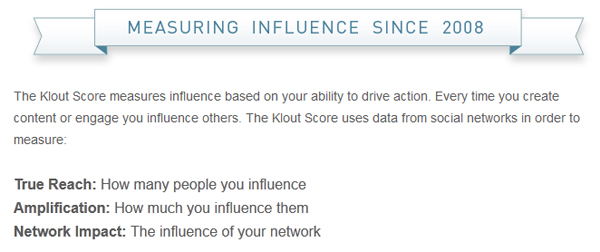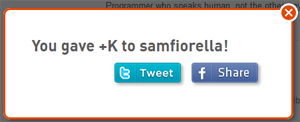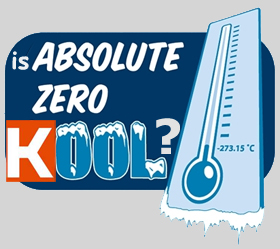Tag Archives: Alan Berkson

Klout, Big Data and the Meaning of “Opt Out”
 Is it possible to have a Klout Score of Zero (K = 0)?
Is it possible to have a Klout Score of Zero (K = 0)?
Why, you might ask, would anybody want to have such a score in the gamified realm of influence measurement, where higher scores indicate a higher level of perceived online influence?
The answer may lie in the way that Klout profiles you, branding you a Specialist, an Observer, or a Broadcaster. The answer may also lie in how people relate to Big Data, vaguely defined ranking algorithms, and the increased tendency of offline organizations to make some big, and potentially misleading, assumptions about the role of online influence in an offline world.
“Klout calculates billions of data points across over 100 million influencers every day.” ~ Klout.com
Whatever the reason, there are people who simply want out. But opting out, and driving your score to a meaningless Zero, is apparently a bit more difficult in the Klout dimension than one might imagine.
I PRESENT TO YOU MR. SAM FIORELLA
Mr. Fiorella was recently referenced in a Wired.com article (What your Klout Score really means) that delved into an experience he had a while back with a potential employer, who eliminated Sam (and possibly others) from the list of candidates based on his perceived “sub-par” Klout Score. As listed on the Klout.com website…

It’s not the first time something in the online world has impacted a decision in the offline world, and it definitely won’t be the last (see Jeremiah Owyang’s post “How ‘Social Profiling’ Will Work In The Real World“).
Sam ultimately did improve his Klout Score (into the 70’s) but was never happy with the idea of being ranked (or branded) by an algorithm for online OR offline purposes. So when Klout offered an “opt out” option at the beginning of November, 2011, he promptly did just that. He opted out and initiated the deletion of his Klout profile, per the language on the Klout site:

As far as Sam was concerned, he was satisfied that after opting out nobody would be able to view his Klout Score moving forward and that only trace data would remain in the system (for 180 days, after which it would be removed).
He also understood that Klout would continue track his activities on the public broadcast social site Twitter.
Note: I wouldn’t be surprised if Klout NEEDS to track Sam privately in order to accurately determine the Klout Scores of others within his Twitter social graph. In essence, influencers who are not tracked become dark matter, or invisible thought leaders. They mess with what we perceive by influencing behavior in unseen ways.
But there was also a level of expectation that the information gathered on Twitter (and his resulting private Klout Score) would to be kept private and OFF the Klout.com site.
Unfortunately, it didn’t work out that way.
I PRESENT TO YOU MR. SAM FIORELLA’S GHOST
In the name of full disclosure, I know Sam personally and I am a registered Klout user. I was also aware when he, and others, opted out of Klout last year. So when I read the Wired article, and the various other articles and posts that it spawned, the analyst in me was just a bit curious to see if Sam had in fact been removed from the site. So I search Klout.com and found no public profile or information on him.
But I did come across the profile of a friend of mine, and attached to that profile, in their Influencers list, was the smiling face of Sam Fiorella. On the site, exactly where it should not have been.
Apparently, the phrase “you will be removed from Klout.com within 24-48 hours” – as mentioned in the Klout opt out statement – may not mean what you think it means.

Sam opted out from Klout almost 6 months ago. Could this possibly be the “trace data” mentioned in the Klout “opt out” statement? I don’t believe so, as his current Twitter avatar is on display along with an assumingly current Klout Score of 52 (which sounds plausible since Klout appears to be pulling his data only from Twitter, not the complete list of social sites that Sam previously had linked to his Klout account, and it increased to 53 last night).
But wait, there’s more (thank you Ron Popeil). While I did pass on the option to invite Sam back to Klout (he wouldn’t have accepted anyway), I couldn’t resist the chance to test the software and see if it would allow me to give him a +K in Blogging. It did:
 I’m not sure the +K stuck (even though it does now show me a greyed out +K button for Sam and Blogging, it apparently didn’t decrement my +K counter).
I’m not sure the +K stuck (even though it does now show me a greyed out +K button for Sam and Blogging, it apparently didn’t decrement my +K counter).
But the mere fact that it allowed me to go through the action, give me a success notification and offer the option to Tweet the +K out, was more than just a bit interesting – it was a challenge to figure out what had gone wrong, how it might be corrected and to think strategically a bit about some of the larger (beyond Klout) implications it might have.
FOR YOUR CONSIDERATION
From a social perspective, you cannot deny that influence exists – marketing, advertising and sales people have been trying to identify and target influential consumers for years. Nor can we deny that our online and offline lives are colliding extremely fast, and influence in one medium can, and will, transcend to another.
From an online influence measurement perspective, there is a defined need to look for insights in online behavior (served by Klout and other firms such as PeerIndex, Twitalyzer, TweetLevel, etc.), and the people at Klout have been very honest and open with me, and others, about how and why they are undertaking this task.
But there is a disconnect when a phrase like “removed” appears to mean “erased a bit” – not quite how I would interpret it.
CAN WE ACHIEVE ZERO?
When Sam opted out of Klout, he assumed that he would still have a Klout Score, but that his information would no longer be shared or visible to others – in essence giving him a public null Klout Score (K = 0) that he sought. While the data would still exist, and be interpreted by Klout, they would not share their interpretations with others.
So why is Sam Fiorella still appearing on Klout? Perhaps there is an issue that weaves around Klout’s interpretation of words, and the managing of expectations from a contractual Terms of Service (TOS) perspective. Or perhaps it has to do with the massive amounts of Big Data that we are crunching on an ongoing basis, with technology evolving at such a rapid pace that glitches and ghosts, while unacceptable, are going to occur. Either way, there is a flaw somewhere in the system, and Mr. Fiorella has become its poster child.
PRIVACY AND PERVASIVE COMMUNICATIONS
Sam’s issue with Klout is bigger than either Sam or Klout. Not to diminish what Sam is going through, neither Sam nor Klout are alone in facing issues regarding personal data, big data, privacy or changing technology. If anything, his dilemma is indicative of a much larger series of questions and issues that we face.
We live in an age of technology-enabled Pervasive Communications. Our ability to communicate with almost anyone, anywhere at any time, over a multitude of communications channels, is allowing us to unleash our DNA-driven need to create, share and consume content and information with others.
As we do this, our public actions are increasingly tracked, tagged, shared and mined by people and companies that we’ve never met. They’re sifting through piles of Big Data looking for patterns, for trends, for clues regarding what influences our decisions, and how our decisions influence – if at all – the decisions of others. This isn’t necessarily a bad thing, but when this activity lacks true transparency of both intent and use, the user is increasingly, and unknowingly, giving away far more than they are receiving in return.
“There is nothing in the dark that isn’t there when the lights are on.”
~ Rod Serling
The data is out there and it’s not going away. It may lose some of its relevance, but it will still be out there and is increasingly being linked with other data to create “new” data. The questions of who really owns our data (both pre and post-processing), how and when it can be shared and reused, and how much light (transparency) should be shined upon it, will likely be argued (and should be) for many years to come.
While many individuals may argue that they want their data out there (in an effort to achieve a richer, more engaging online experience), I do believe that there are different times and places for private and public, and, as individuals, businesses and governments, we need to continually ask ourselves:
- What should the ground-rules be for how Terms of Service and ownership of data are defined?
- How will we let these definitions and rules evolve and adapt to technology and human behavior patterns that don’t yet exist or have yet to be defined?
- How can we provide true transparency (in simple terms) to online users regarding their data and its linkages with other data (there’s a business out there if you can create that infograph, BTW)? And,
- How we are going play together in an ever shrinking sandbox where transparency has become a buzz-word and personal privacy continues to become increasingly elusive?
I also believe that when an “opt out” option is offered, as it was with Klout, it should be just that – a way for you to take yourself, and your data, OUT of the system. If not for your actions, the data wouldn’t exist in the first place.
Note: Images adapted from Klout.com

Disruption and Innovation, Part I
 Over the years, as an analyst, advisor and even as an entrepreneur, I’ve heard the phrase “Our strategy is to disrupt
Over the years, as an analyst, advisor and even as an entrepreneur, I’ve heard the phrase “Our strategy is to disrupt
Why? I’ve always believed that the fastest way to success is to avoid trying to knock somebody off the ladder and, instead, build your own ladder. You control your future. You shape the market. You let the people on the other ladder pursue their evolutionary strategies while you quietly create a revolutionary strategy.
THE RELATIONSHIP BETWEEN DISRUPTION AND INNOVATION
To be clear, there is a definite relationship between “disruption” and “innovation” not to be confused with Clay Christensen’s “Disruptive Innovation”. Often, they feed off of each other – one leading to the other (or at least providing an opportunity for the other to take hold).
Innovations within a market can ultimately lead to the disruption (or devastation) of an existing or adjacent (but different) market (example: iPhone’s App store devastating video games, wrist watches, cameras). Note that true innovations don’t just offer better versions of existing products, but offer better alternatives to existing products – they ultimately replace them.
Similarly, disruptions within a market (or a vendor if they dominate that market) can often provide an enhanced opportunity for new and innovative vendors and products. The more disruptive a market has become, the greater the opportunity for innovation to create a new, better alternative market. But there are differences.
And far from being singular events, disruptions and innovations can often be associated with long-term evolutionary trends, rather than singular events (Pervasive Communications is a great example of two trends (technology and human behavior) leading to a disruption of both social structures, technologies and global markets (check out Alan Berkson’s framing of Pervasive Communications and a video chat with Brian Reich on the global implications of Pervasive Communications).
DISRUPTION
Disruption, like the stuff that hits the fans, often just happens. It can be caused by any number of different conditions. Disruptions to supply chains. Technological advances. Corporate mismanagement. Natural disasters. All can result in a market (and its vendors) being disrupted. In the extreme, the disruption devolves into a state of chaos – and chaos (while it may offer opportunity for those able to restore order) is usually not a characteristic of a market you want to enter.
To this last point, the notion of “disrupting” a market of a vendor to gain a competitive advantage is more often than not simply the wrong approach (a great example being the often asked question in the analytical/advisory space: “Why hasn’t anybody been able to disrupt Gartner’s business model”). To disrupt an entrenched vendor’s business model means to disrupt their market, which may be extremely difficult/impossible to achieve without disrupting your own chances of stepping in to take advantage of the opportunity (an issue we’ll discuss in Part II).
INNOVATION
Innovation, on the other hand, is more often the result of a “spark” or idea that transcends the products, services and strategies of an existing vendor or market. It creates something new: its own ladder. Rather than competing head to head against an existing market or vendor, it offers an alternative that, if done correctly, is often unnoticed by other vendors. It doesn’t (initially) compete for the same budget, nor does it require a “magic quadrant” or an “us vs them” comparison.
A true innovation stands alone – it is its own product and market replacing the need for existing products and markets. It obsoletes prior structures (an issue we’ll discuss in Part III) and represents – in both the short- and long-term – a new market opportunity.
While a new innovation may ultimately compete for overall corporate/consumer dollars, it is often differentiated enough that it can initially sit along-side existing products and simply blend into the landscape. In fact, the best innovations are the ones that existing market players don’t deem as viable – very different from a product evolution that may be considered cannibalistic if they were to implement it themselves.
Taking it deeper, a true innovation will ultimately replace the need for existing products, vendors and even markets. All though not common, the “existing products” *may* not actually exist (although the need for them may – the case of the impractical market), or if they do exist, they *may* under-perform or not currently meet market demand (something that may not be obvious or intuitive to either consumers or vendors).
Take, for example, the iPhone (introduced only five years ago in 2007). In and of itself, it wasn’t a true innovative product, but rather an evolutionary extension of existing multi-media phones (like the Blackberry). But the Apple App Store – when combined with the iPhone (in 2008) – was a true innovation. It created a new market, obsoleted others and forever changed the way that hundreds of different products (as applications) were brought to market.
MOVING FORWARD
In the next few posts we’ll discuss the different types of disruptions and innovations that commonly occur, and the risks and rewards that accompany each (here’s a thought to ponder: most disruptions – especially man-made – offer more risk than reward, while most innovations offer tremendous reward with very little risk).
Have a different perspective? Toss it out. There are plenty of opinions on this subject and I’m looking forward to the debate.
“Oops!” Broken Lightbulb photo courtesy of Kyle May licensed under Creative Commons
Note: Post updated to highlight and clarify distinction between “disruption and innovation” and “Disruptive Innovation”

Mentoring, Networking and Innovation – Revisited
History is filled with examples of linkages between networking, mentoring and innovation, but over the centuries the knowledge acquisition ecosystem has changed considerably. There was a time when this process was slow and rooted in tacit knowledge, but as the needs and wants of society progressed and evolved, the process became more refined—moving faster— and rooted in the exchange of explicit knowledge.

TACIT KNOWLEDGE – SHOW ME!
Regrettably, as society and technology continue to explode at a pace that stretches Moore’s law, it translates to the current knowledge acquisition ecosystem being broken; in fact, we may be at risk of losing a generational exchange of knowledge and innovation.
Following is a fast-paced tour through related history, plus a prescription for 21st century mentoring, networking and innovation.
IN DAYS OF YORE
Centuries ago, the path to gainful employment often required apprenticeships. If you wanted to learn a trade, you had no other option: you needed to find somebody who was already doing it.
Through practice and much coaching—especially if it involved tacit knowledge—you could eventually master a particular craft or art. This was a one-to-one relationship that benefited both the master and the student. Students learned a trade that would serve them for life, and masters acquired young, cheap talent to keep their businesses alive. If you wanted to learn a trade, you had to find a person who was willing to teach you how to do it. And, if you were lucky, the master provided you with paid employment at the end of your apprenticeship.
In this type of direct one-on-one learning process, a master could only have a limited number of apprentices at any one time. This not only limited the ability of the master to educate the masses in their skill, but it also limited the ability of the young student to ask questions or bring new ideas to a wide audience.
While the collaborative sharing of knowledge occurred, the resulting by-product—innovation—was a slow process measured in decades, not years or months.
THE AGE OF MASS

EXPLICIT KNOWLEDGE RULES
During this period, the master/student apprenticeship process evolved into—particularly at the management level—a mentorship process. The master/student relationship remained intact, but it became less about passing along tacit knowledge and fundamental skills and more about the refinement and guiding of the student’s careerpath.
Throughout this revolutionary period, the one constant in the apprenticeship and mentorship processes was that both the master and the student benefited from the relationship. It was a two-way street that helped advance both experienceand new ideas.
In essence, it helped foster innovation.
THE NEXT “NEXT”
In the 21st century, we’ve shifted into a post-industrial, information-based economy that once again has resulted in a requirement for both educational change and a shift in the type of workforce required. Unfortunately, some things have changed (not necessarily for the better) along the way; namely:
- the master/student mentorship process quickly is becoming a casualty of the global availability of information; and
- there is a shift in the way society learns and how we reinforce our decisions.
THE “HYPER-CONNECTED” GENERATION
Technology, pervasive communication and the global availability of “any information everywhere” have had a negative impact on the state of mentorships.

Photo of sign at Newton-Lee Elementary School in Ashburn, Virginia by Fred McClimans.
Twenty years ago we had a culture where peers still relied upon personal face-to-face (or voice-to-voice) real-time communications. As we “graduated up” from high-school to university or college, we were introduced to a new level of peers and potential teachers/mentors. As we left our institutions of higher education and moved into the work-force, each new job opportunity brought with it a “new” level of contacts.
This change in contacts and peers wasn’t necessarily by choice. It was a by-product of the way we communicated and the limitations that geography placed upon our network of “on-demand” peers.
Today’s generation (some may call it Gen Y or Millennials—we’ll use the phrase “hyper-connected” here) faces an interesting conundrum:
As they move from high-school into the work-force, the hyper-connected still encounter the same “new contact” opportunities as their predecessors. The complication is they also bring with them a collection of trusted peers, with whom they remain connected through pervasive communications.
As a “trusted” group, and taking into account peer pressure, it is no surprise they rely heavily on this group of peers when it comes to making lifestyle or career decisions. Rather than seek out the advice of those with experience in their new-found field of employment, the hyper-connected often are likely to seek the counsel of their long-term friends.
This may fill the need the hyper-connected have to gain confirmation or acceptance of their plans, but it diverts their attention from the value that an outside advisor or mentor can bring to the equation.
THE NEED TO MENTOR
Why do we mentor others? Like parenting, it’s motivated by both selfish and selfless aspirations.
We want to:
- Bestow on others our own knowledge;
- Give them the opportunity both to work with us and for us; and
- Pass along our collective experience to those who we trust to continue our legacy.
At the same time, we recognize they may become our peers or even our competition—something that both forces us toraise our game to the next level and challenges us to find innovative solutions to win the game.
Where does this innovation come from? The innovation comes from the exchange of ideas with those we mentor.
WHY NETWORKING IS KEY TO LEVERAGING MENTORING
It’s often been said that it is not what you know but who you know. Today, more than ever, people recognize the value of diversity of opinion. We also recognize that a person need not have just one mentor and that mentorship needs—and mentors—may change over time; ultimately, helping to form a group of trusted advisors.
How do you accommodate this?
Mentoring is part of a larger ecosystem of networking. It requires you to reach out of your comfort zone to find those who are “where you want to be.” Unfortunately, too many people are afraid to—or don’t feel the need to—truly network and reach out to establish these long-term beneficial relations.
Simply reaching out online to ask an experienced person a question, or asking for a limited piece of advice, isn’t true networking. It often results in answers that lack context.
What many of today’s younger generation fail to realize is that networking isn’t about:
- following people;
- commenting on a blog; or
- asking a question from a person with whom you haven’t built a relationship of trust.
While the old axiom “you may find that the most successful people make the most effective mentors” still applies, it has taken on a new meaning in the digital era. It isn’t about how many people you follow or how many people follow you, buthow many personal relationships you cultivate through your online community.
TOMORROW’S WORKFORCE
As we migrate from a world driven by process to one focused on innovation and problem-solving, we see the benefits of both data-driven components and experiential/tacit knowledge—something that is ideally suited to the:
Internship > Mentorship > Employment Model
As we create new professions (community managers didn’t exist a decade ago), we find that traditional education falls short in preparing candidates with the requisite skills and mindset to be successful.
Today’s questions are now:
- “How do we bridge that gap?”
- “How do we cross that functional/educational divide?”
The answers are that we—collectively—need to reach out proactively to schools and to students in the early stages of their careers. We need the hyper-connected to:
- Think analytically; and
- Evaluate events and circumstances and make the most effective and positive decisions they can.
And we need to:
- Push them towards internship programs that foster and grow this critical skill set; and
- Ultimately, lead them to mentorship programs that offer opportunities and provide for the mutual exchange of knowledge and ideas that lead to innovation.
THINGS THAT MAKE YOU GO “Hmmm…”
We invite you to ponder this mental checklist:
- Are you reaching out to your local college or university community (or your summer student base) and offering internships that make a difference?
- Are you willing to both educate and learn from your interns?
- Do you realize the value (both for your organization and children) of helping the next generation of leaders benefit from your experience (careful – this requires a time commitment…)?
- Are you willing to openly give to those that you mentor, allowing them the opportunity to learn from you, work for you and perhaps even compete against you?
If the answer to any of the above is yes, you are one step ahead of your competition.
This post, co-authored by Alan Berkson with Fred McClimans, originally appeared on October 2, 2011 in PR Conversations. It has been reprinted and updated here.
Alan Berkson is a principal at the Intelligist Group in New York, USA, where he focuses on helping businesses move past blockages, leverage unidentified or underused assets, and identify opportunities for growth. He provides provocative commentary and theories on a variety of business strategy topics on his blog, The Intelligent Catalyst. Connect with him on Twitter, Google+ and LinkedIn.
Fred McClimans is the managing director of the McClimans Group in Washington, DC, USA, where he focuses on helping businesses improve their strategic business influence and find creative ways to drive their market from a proactive perspective. Read his blog at fredmcclimans.com. Connect with him on Twitter, Google+ and LinkedIn.
Together, Alan and Fred are working on 2020F, a global community being built to identity, track and trend disruptive events that have the potential to influence long-term change in both related and tangential markets, including developing actionable solutions to both minimize the risk and maximize the opportunity of current and future disruptive events.
5 Properties of Influence You Need to Understand
There has been a great deal of discussion of late regarding influence, most of it centered around who has it, how to measure it and how to leverage it. So when I sat down with my good friend and colleague Alan Berkson (@berkson0) of the Intelligist Group to discuss influence, we decided to push each other in a slightly different direction.
Rather that focus on how influence is quantified, we decided to take a look at what defines influence, and in particular, what are some of the universal characteristics of influence – not just in social media, but in the real world, across any/all markets and not limited to any specific time period.
At the end of our talk, several hours later, we had identified a number of unique characteristics of influence that were not limited to individuals, but also applied to events and trends. Here are five that we found particularly noteworthy – feel free to add your own to our list…
1) Influence can have a transitive reach across multiple industries or market sectors
Being influential in one market can often lead to being influential in another. In fact, the more influential a person or event is in a particular market can often be a good indicator of how far that influence can be extended, but there are limits.
Take for example, Bono, of U2. He has leveraged his influence in the music industry into the realm of humanitarian causes with great success, but I probably wouldn’t be swayed at all if he tried to sell me a Fiat. On the other hand, Lou Gerstner (who turned around IBM despite a non-tech background with RJR Nabisco and American Express) and Jack Welch (who drove General Electric to a dominant position during his tenure from 1981 – 2001) have enough influence, clout and experience to dominate just about any industry they touched (their influence in this case was both within their industry and within their companies, as motivators). But again, while I might be influenced by their actions in other unrelated business sectors, I probably wouldn’t be swayed by their attempt to sell men’s fragrances.
2) Influence can have variable fade curves by time
Influence is not a steady thing, it ebbs and flows like the tide, but ultimately tends to fade over time. In some cases, the influence of a person is felt both in their present (look at how Johannes Gutenberg revolutionized the printing process in his own time) and the long term future (without Gutenberg’s invention, the age of knowledge would never have occurred).
For some, the curve is very steep and fades with extreme prejudice (ala 15 minutes, or even seconds, of fame – the same can be said, by the way, for trends or “fads”), while for others their personal and global influence continues to grow to span their entire life. For example, look at how the influence of Stephen Hawking continues to grow and drive advances in the world of physics (his curve continues to rise and will have a very slow fade, similar to Albert Einstein).
3) Influence can be cyclic and/or recurring
Influence, of both trends and people, can be recurring. Steve Jobs is a great example here. While he was at Apple (the first time), his influence rocketed upward. But when he left, his influence (over both the company and the market) dropped to almost nothing. Interestingly, when he returned to Apple, his influential status picked back up exactly at the place where he left it, and it hasn’t stopped growing since.
In a different way, past figures can see a resurgence of their influence, often in unintended ways. Here are two really interesting examples:
- Yul Brynner, the famous actor who passed in 1985, saw a resurgence in his influence through a series of anti-smoking commercials he recorded prior to his death to be released years after his death. Here, his influence not only was recurring, but transcended the industry in which he was known.
- Charlton Heston, the great actor and long-time champion against gun control laws, while known for his acting is best remembered for his line “from my cold, dead hands” – a phrase uttered well after his fame as an actor had faded that has now, even today, remained a rallying cry for those who believe the 2nd Amendment guarantees their right to bear arms.
The list goes on. Look at how RunDMC jump-started Aerosmith’s fading career with their cover of “Walk This Way”, or how Tony Bennett, the singer famous in the mid-1900’s was able to stage a remarkable comeback with a younger generation, appearing along-side the Red Hot Chili Peppers and Flavor Flav, or Roy Orbison, whose career was revitalized through the collaborative efforts of people like Tom Petty and Elvis Costello, bring his then “old” music to a new generation of younger fans.
4) Influence transcends positive & negative
The saying there is no such thing as bad press is as true as ever. Influence doesn’t respect the boundaries of good or bad, it simply is, and can often work in ways that would seem to be at odds with common sense. Need a good example? Take a look at Rupert Murdoch. Throughout his career, he has had his share of tremendous successes and dreadful controversies. Neither of these has, in the past, diminished or limited his ability to wield tremendous influence through his media empire. Even with his current scandal, involving the News of the World newspaper (and also the name of one of my favorite Queen albums), it is extremely uncertain what the long-term impact will be on his influence or his legacy.
5) Influence transcends medium
Influence often works in subtle ways. For example, trusted and famous actors often lend their voice, not their image, to commercials across various industries. Most people don’t recognize the voice at first (if at all), but they do subconsciously associate the comfort they feel with that “voice” despite the fact that the medium doesn’t show the face of the actor or even mention the actor’s name. Great examples include the actor Sam Elliot, who despite a brilliant screen career, has probably had more true influence through his voice-over line “Beef, it’s what’s for dinner” than he has had in his acting career. Interesting, isn’t it.
Like I said above, these are just five examples that we thought noteworthy. There are many more, and I think the real value of this list is how we leverage these characteristics in our daily personal and business lives – feel free to add your own to our list…